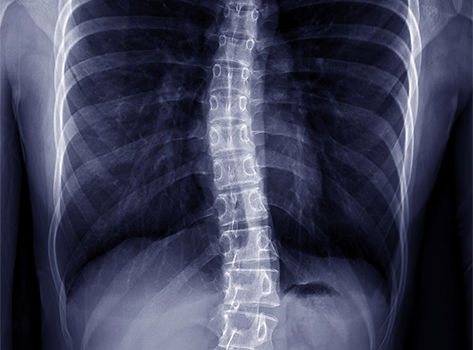
Scoliosis is a condition that causes an abnormal curve of the spine. In severe cases, it can be debilitating. Treatment options include bracing, physical therapy and surgery like spinal fusion. Spinal fusion surgery can fix the curve in the spine and prevent pain from scoliosis. But it also limits movement by immobilizing the spine.
Now, Morristown Medical Center’s Orthopedic Department is revolutionizing scoliosis treatment by offering patients, including children and teenagers, a minimally invasive spine surgery called Vertebral Body Tethering (VBT). This innovative treatment preserves spinal motion.
Bringing Leading-Edge Care to New Jersey and the Nation
Atlantic Health System is one of just 25 centers in the country performing VBT. Jason E. Lowenstein, MD, Director of Scoliosis and Spine Deformity, is leading the effort to bring this less-invasive treatment to patients in New Jersey and across the U.S. Dr. Lowenstein’s team performed the first VBT procedure at Atlantic Health System in 2021, and patients have been traveling to Morristown Medical Center to receive this innovative procedure ever since.
“Whenever possible, we want to preserve our patients’ spinal motion and avoid spinal fusion surgery,” says Dr. Lowenstein. “We’re proud to bring this innovative approach to Atlantic Health System and it’s a testament to the high quality of our Orthopedic Department that we can be an early adopter of this procedure.”
Led by Chairman James Wittig, MD, the Orthopedic Department at Atlantic Health System brings quality, dedication and expertise to patients with complex conditions. The surgical team performed more than 12,000 procedures in 2023.
“VBT offers a significant advancement in scoliosis treatment,” says Dr. Lowenstein. “This innovative treatment gives patients a flexible alternative to traditional approaches. Long term, we hope to see the benefits of VBT in preserving spinal motion, reducing long-term complications and improving patient outcomes.”
A New Approach to Spine Surgery
VBT doesn’t fuse vertebrae in the spine together like other surgeries. Instead, a surgeon places implants into the spine to correct the abnormal scoliosis curve. This procedure uses a flexible cord and screws along the curve to preserve spinal motion. VBT also offers patients a faster recovery, reduced risk of additional surgeries and increased flexibility.
“With VBT, surgeons can compress the spine along the curve to straighten it out, but that still allows for motion,” says Dr. Lowenstein. “When a child who gets this procedure grows up, they hopefully maintain motion across those segments. That means they can be more active after surgery and have less stress on the spine – and they can have more flexibility throughout their lives.”
As a new procedure, VBT continues to evolve and improve. Researchers are looking now at how VBT differs when performed on different parts of the spine. Studies have shown the potential for “hybrid” VBT surgeries that combine spinal fusion with tethering. This combination may help patients with severe scoliosis correct their spinal curve while preserving as much motion as possible.
“It really is a wonderful advancement and I have been so impressed with how well my patients have done,” says Dr. Lowenstein. “We hope to expand the opportunities to offer VBT to more scoliosis patients as we learn more about this procedure. VBT offers an amazing opportunity to improve how we care for scoliosis patients now and in the future.”
Be Proactive About Your Health
To stay safe and healthy, it's good to have a primary care provider who knows and understands your health history and wellness goals.